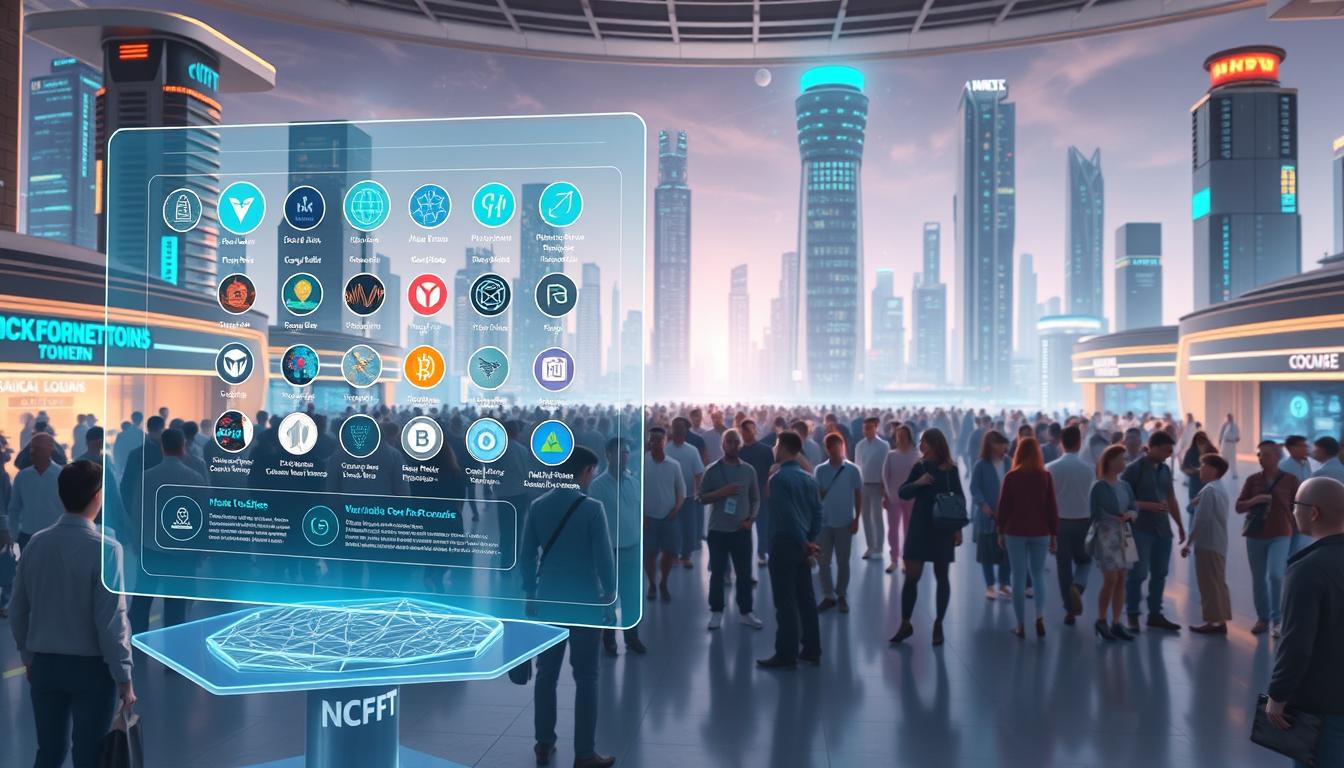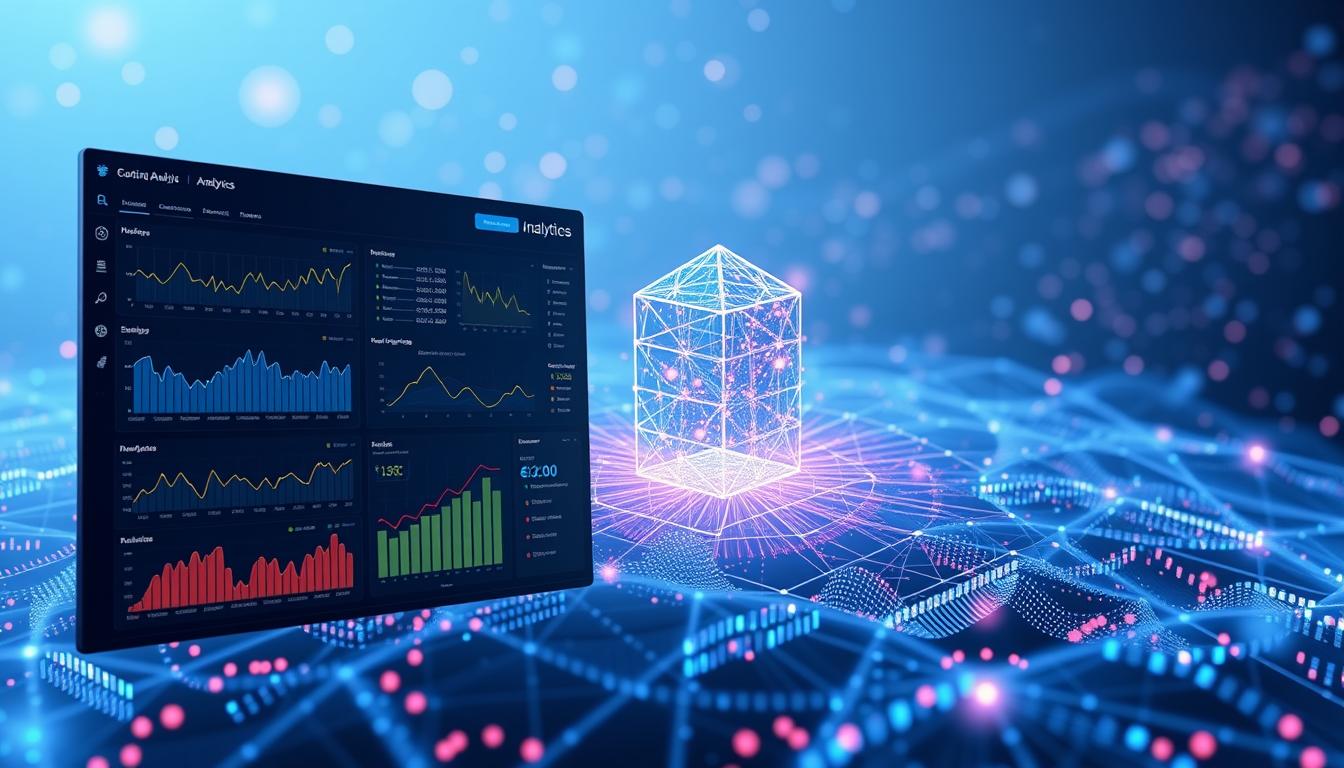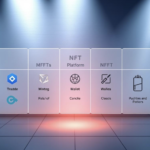Now Reading: Exploring Artificial Intelligence Blockchain Technology Applications
- 01
Exploring Artificial Intelligence Blockchain Technology Applications
Exploring Artificial Intelligence Blockchain Technology Applications

The fusion of cutting-edge analytical systems with decentralized networks is reshaping how organizations operate. Recent projections suggest this powerful combination could drive industry growth to unprecedented levels within the coming decade. By merging pattern recognition strengths with secure record-keeping protocols, businesses gain new tools to tackle modern challenges.
Advanced data analysis systems process information at remarkable speeds, identifying trends humans might overlook. These systems learn continuously, improving their predictive accuracy over time. When paired with tamper-resistant transaction networks, they create verifiable decision-making frameworks.
Market analysts highlight growing demand for solutions that ensure transparency while handling sensitive operations. Industries from healthcare to finance now explore ways to implement these synergistic technologies. Early adopters report enhanced operational clarity and reduced administrative costs.
Key Takeaways
- Combined systems projected to reshape multiple industries within 10 years
- Data analysis strengths complement secure transaction networks
- Enhanced security protocols reduce fraud risks in digital operations
- Operational efficiency improvements reported across early implementations
- Cross-industry adoption accelerating as toolkits mature
Organizations seeking competitive advantages now prioritize understanding these integrated platforms. This guide examines practical implementation approaches and real-world success stories. Discover how forward-thinking companies are future-proofing their operations through strategic technological partnerships.
Understanding the Convergence of AI and Blockchain
A powerful collaboration emerges as adaptive learning systems merge with tamper-proof record-keeping. This partnership unlocks new possibilities for secure, data-driven decision-making across industries.
The Evolution of Decentralized Systems
Early peer-to-peer networks focused on basic data sharing. Modern distributed ledgers now support complex operations through self-executing agreements and encrypted validation processes. These advancements enable real-time verification of multi-party transactions.
| Feature | Past Systems | Current Capabilities |
|---|---|---|
| Data Handling | Basic file sharing | Complex pattern analysis |
| Security | Simple encryption | Multi-layer verification |
| Automation | Manual processes | Smart execution protocols |
Enhancing Operations Through Advanced Analytics
Self-improving algorithms now optimize ledger performance by analyzing transaction histories. These systems can:
- Detect anomalies in real-time
- Adjust validation parameters automatically
- Predict network congestion points
Pattern recognition tools process millions of data points to streamline contract execution. This reduces processing delays while maintaining audit trails. Companies using these methods report 40% faster resolution times for complex agreements.
Exploring artificial intelligence blockchain technology applications
Cutting-edge validation techniques are transforming how organizations handle critical information flows. These systems combine automated verification with self-learning capabilities to create robust frameworks for digital operations.
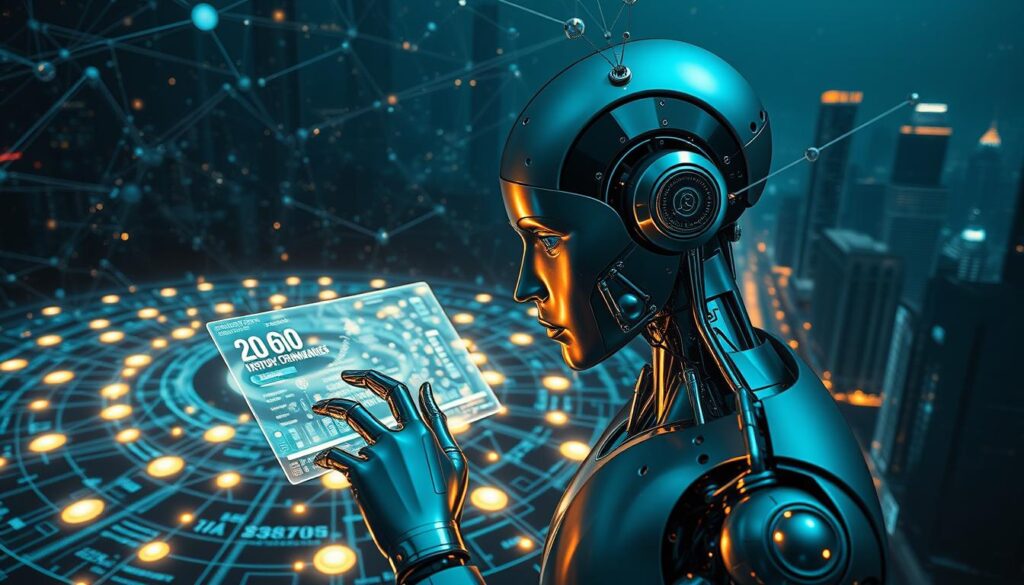
Enhancing Data Integrity and Verification
Modern verification tools automatically screen incoming information for accuracy. Machine learning models cross-reference data sources and flag mismatches before records get added to distributed ledgers. This prevents errors from spreading across networks.
Pattern analysis identifies unusual activity in real time. For example, sudden changes in supply chain metrics or financial transactions trigger immediate reviews. Systems learn from past incidents to improve detection rates over time.
Optimizing Smart Contracts with AI
Self-learning agreements now adapt to complex scenarios using historical performance data. Algorithms predict potential conflicts and adjust terms proactively. Explore how AI tokens are driving innovation in automated agreement systems.
Natural language processing converts legal documents into executable code within minutes. This eliminates manual coding errors and speeds up deployment. Contracts automatically verify compliance through real-time data feeds from authorized sources.
| Feature | Traditional Systems | AI-Optimized Systems |
|---|---|---|
| Data Checks | Manual reviews | Automated anomaly detection |
| Contract Updates | Fixed parameters | Dynamic condition adaptation |
| Error Rates | Higher discrepancy risks | Predictive error prevention |
Real-World Use Cases and Innovative Implementations
Forward-thinking enterprises now deploy integrated systems to solve complex operational challenges. These implementations showcase practical benefits across industries while maintaining compliance with evolving standards.

Blockchain Security Enhancements Powered by AI
New York’s Certik leads in smart contract auditing through machine learning tools. Their systems scan code for vulnerabilities 24/7, catching risks traditional methods overlook. Real-time analysis of transaction flows prevents fraud across blockchain networks by flagging abnormal patterns instantly.
Asset Tokenization and Market Predictions
California-based Solulab transforms physical assets into digital tokens using valuation models that analyze market trends. Neureal’s prediction engine processes decentralized data streams to forecast stock movements with 89% accuracy. These solutions enable faster capital allocation while maintaining transparent records.
Decentralized AI Projects in Practice
Three pioneering platforms redefine collaborative development:
- SingularityNET enables shared access to specialized algorithms
- Ocean Protocol creates secure data marketplaces
- Fetch.ai automates resource coordination across supply chains
These networks distribute computational workloads, reducing reliance on centralized servers. Early adopters report 35% faster processing speeds compared to conventional cloud systems.
Addressing Challenges in Ethics, Data Privacy, and Scalability
Balancing innovation with ethical responsibility remains critical as decentralized networks evolve. Over 60% of tech leaders now prioritize transparency in automated decision-making processes. Regulatory gaps persist, creating risks for organizations handling sensitive information through advanced analytics.
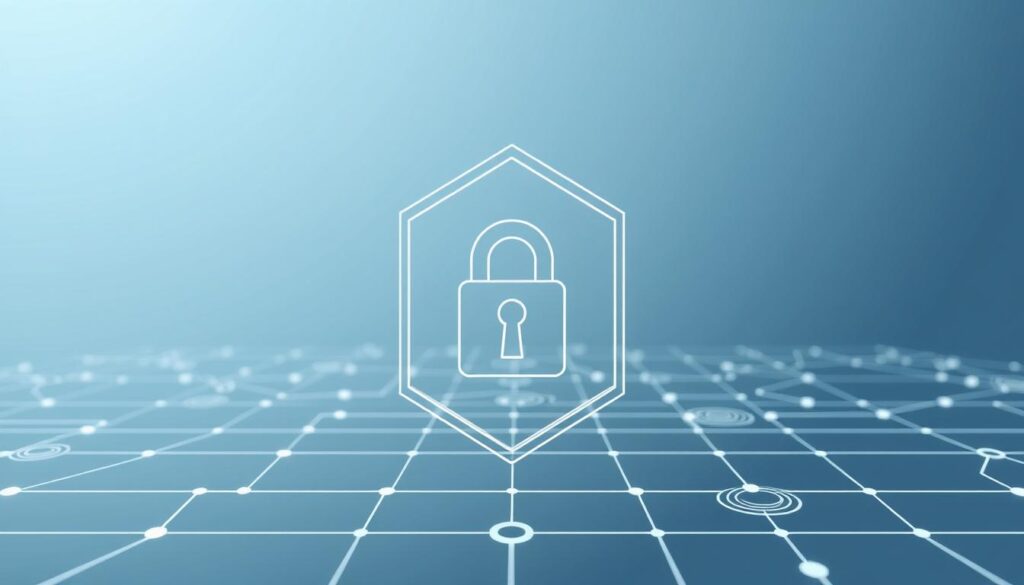
Mitigating AI Bias and the “Black Box” Problem
Training materials directly influence automated decisions. Flawed datasets can create unfair outcomes that become permanent on distributed ledgers. One healthcare firm discovered its patient prioritization model favored specific demographics due to incomplete historical records.
| Challenge | Traditional Approach | Modern Solution | Impact |
|---|---|---|---|
| Decision Transparency | Manual audits | Explainable AI modules | 42% faster compliance checks |
| Bias Detection | Periodic reviews | Real-time fairness scoring | 67% error reduction |
| System Updates | Full network overhauls | Modular architecture | 90% faster patching |
Establishing Robust Data Privacy Frameworks
Public ledgers create unique privacy dilemmas. Advanced encryption allows verification without exposing raw information. Financial institutions now use zero-knowledge proofs to validate transactions while keeping account details confidential.
Scalability solutions combine off-chain processing with optimized consensus mechanisms. Energy companies reduced data bottlenecks by 78% using layered validation protocols. Cross-platform compatibility standards are emerging to streamline multi-network operations.
Fostering Transparency and Trust in Digital Transactions
Digital interactions now demand verifiable honesty. Self-executing agreements combined with unchangeable records create systems where every action leaves a digital fingerprint. This approach builds confidence in automated processes while meeting strict oversight requirements.

Integrating Smart Contracts for Enhanced Security
Automated agreements powered by learning algorithms enforce rules without human intervention. These tools validate conditions through multiple checkpoints before approving exchanges. Healthcare providers use this method to track medication shipments, ensuring only verified suppliers participate.
Financial institutions benefit from instant fraud detection. Suspicious patterns trigger automatic holds on questionable transfers. Audit trails show exactly how decisions were made, reducing dispute resolution time by 65% in pilot programs.
Improving Regulatory Compliance and Transparency
Oversight bodies gain real-time access to verified activity logs. Automated monitors scan for deviations from legal standards, sending alerts before violations occur. Energy firms using these systems reduced reporting errors by 82% last year.
| Compliance Aspect | Traditional Method | Modern Solution |
|---|---|---|
| Record Verification | Quarterly audits | Continuous monitoring |
| Rule Updates | Manual policy changes | Dynamic protocol adjustments |
| Dispute Evidence | Partial documentation | Complete decision history |
Public sector agencies now require tamper-proof documentation for contract bids. This shift prevents favoritism while maintaining competitive processes. Suppliers report increased faith in government procurement systems since implementation.
Embracing the Future: Integrating AI and Blockchain for Business Innovation
A transformative shift is unfolding as collaborative networks replace outdated operational models. Pioneering platforms demonstrate how shared systems can drive progress while protecting user rights. Communities now build value through open participation rather than centralized control.
Projects like SingularityNET and Ocean Protocol showcase this evolution. Their frameworks give businesses tools to share resources securely while maintaining audit trails. This approach turns competitors into partners through transparent data exchanges.
Emerging solutions address critical needs across industries. Healthcare networks automate patient records verification. Supply chains self-optimize using real-time logistics data. Energy grids balance loads through decentralized coordination. Each innovation strengthens trust in automated systems.
Forward-thinking organizations invest in adaptable infrastructures. Workforce training programs focus on managing intelligent ledgers. Strategic alliances form to develop industry-specific toolkits. These preparations unlock potential for revenue streams that reward transparency.
The path forward demands balanced growth. Ethical frameworks must guide automated decisions. Scalable architectures will support expanding networks. Companies embracing this shift position themselves as leaders in the next digital revolution.



